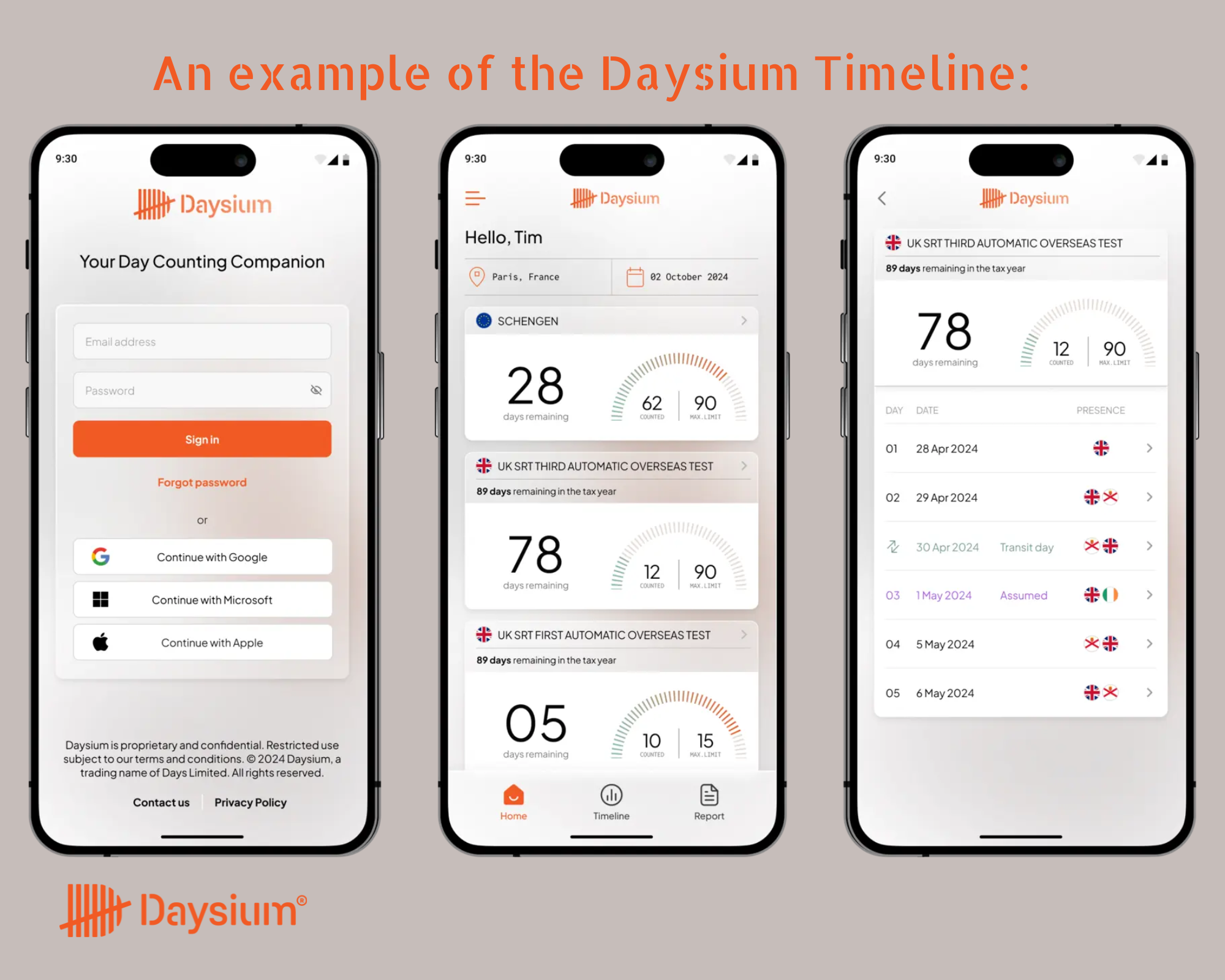Here are five essential steps for businesses:
1. Log employee travel days
Real-time, accurate records are crucial for remote and travelling employees. Give your team the tools they need to stay compliant. The challenge with international travel is that employees can forget to log minor trips or make mistakes in manual records. By automating business travel day counting, you reduce the risk of errors and ensure your compliance efforts are as strong as possible.
2. Monitor cumulative days for all employees
It’s not just individual employees to watch out for — track how many employees work in any given jurisdiction. Cumulative presence can trigger PE risks. For example, if multiple employees are working remotely from the same country, even for short periods, their combined presence could lead to the creation of a Permanent Establishment. Monitoring this threshold is critical for avoiding unintended tax consequences.
3. Assess both the 183-day rule and PE thresholds
Both rules matter, and they differ from one jurisdiction to another. Be sure your company understands the specific thresholds where your employees work. Simply staying under the 183-day threshold won’t always be enough to avoid tax residency, and PE can be triggered long before that threshold is reached.
4. Consider specific measurement periods from relevant tax treaties
Double Tax Treaties (DTTs) often have their own rules, which can change over time. Keep these in mind for compliance. For example, some countries have special agreements that adjust how days are counted, or offer exemptions based on the nature of the work being performed. Staying informed on the latest developments in international tax law is crucial for businesses with global footprints.
5. Set clear day-counting policies
Empower employees with clear guidelines and regular updates to ensure day counting stays top of mind. When employees understand the tax risks associated with travel and remote work, they are more likely to stay compliant and avoid creating issues for the company. The State of Business Communication study showed that 72% of business leaders believe effective communication has increased productivity. Regular training, reminders, and easy-to-access resources help reinforce these policies.









